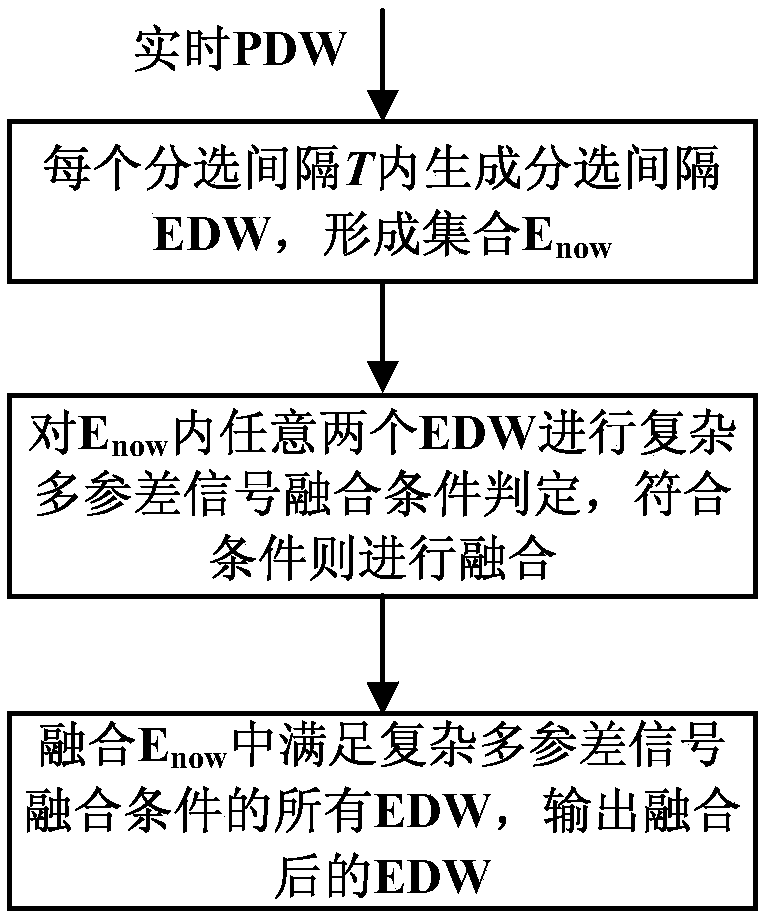Complex multi-stagger signal sorting method based on EDW fusion
A staggered and sorting technology, used in instruments, character and pattern recognition, radio wave measurement systems, etc., can solve problems such as sorting failure, low histogram box height, and inability to pass thresholds, and achieve the effect of improving accuracy.
- Summary
- Abstract
- Description
- Claims
- Application Information
AI Technical Summary
Problems solved by technology
Method used
Image
Examples
Embodiment Construction
[0013] The present invention will be further described in conjunction with accompanying drawings. figure 1 Be a flowchart of the present invention, the present invention comprises the following steps:
[0014] Step 1: For the real-time input PDW data in the sorting interval T, use the improved PRI transformation method to generate the sorting interval EDW, and use the set E for all the generated sorting intervals EDW now express;
[0015] Step 2, for E now Any two EDWs inside, marked as E i and E j , to judge the fusion conditions of complex multi-staggered signals: first judge the fusion conditions of frequency and pulse width, and then judge the fusion conditions of PRI features, that is, judge E i and E j Whether there are multiple and consecutive sub-PRIs, if they all match, then merge E i and E j , the specific description is as follows:
[0016] (2.1) to E now Any two EDWs inside, marked as E i and E j , to determine whether its frequency and pulse width meet ...
PUM
 Login to View More
Login to View More Abstract
Description
Claims
Application Information
 Login to View More
Login to View More - R&D
- Intellectual Property
- Life Sciences
- Materials
- Tech Scout
- Unparalleled Data Quality
- Higher Quality Content
- 60% Fewer Hallucinations
Browse by: Latest US Patents, China's latest patents, Technical Efficacy Thesaurus, Application Domain, Technology Topic, Popular Technical Reports.
© 2025 PatSnap. All rights reserved.Legal|Privacy policy|Modern Slavery Act Transparency Statement|Sitemap|About US| Contact US: help@patsnap.com

